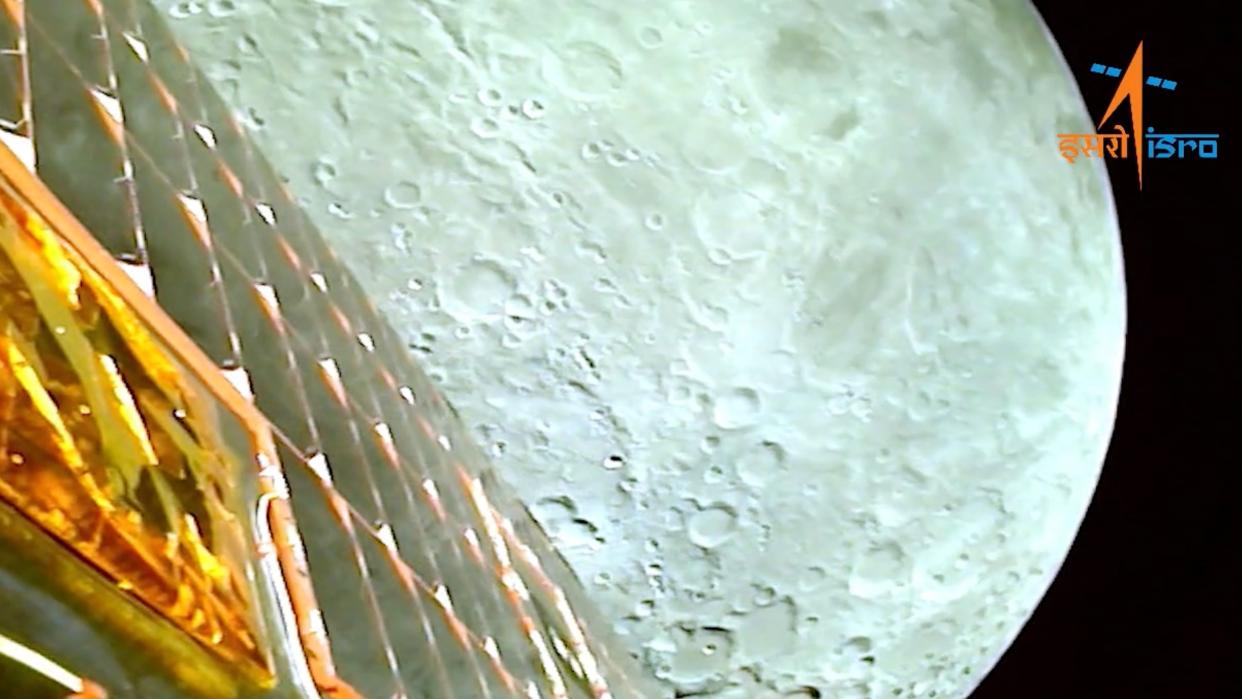India's Chandrayaan-3 moon rover enters lunar orbit, snaps stunning photos (video)

India's Chandrayaan-3 lunar lander has returned its first images from the moon after entering orbit around our nearest neighbor.
The Indian Space Research Organisation (ISRO) released the images on Sunday (Aug. 6), showing that the spacecraft had reached its destination ahead of a lunar landing attempt expected on Aug. 23.
Chandrayaan-3 launched on July 14, heading into an initial highly elliptical Earth orbit. It then gradually raised its orbit before making a burn on July 31 that set it on course for the moon. The spacecraft successfully entered orbit around our natural satellite on Saturday (Aug. 5), according to ISRO.
Related: Chandrayaan-3: A guide to India's third mission to the moon

The spacecraft will conduct further engine burns to bring it into a circular track about 60 miles (100 kilometers) above the surface of the moon a week ahead of the expected landing attempt.
The newly released images, which ISRO stitched into a 45-second video, show the solar arrays of the Chandrayaan-3 spacecraft in the foreground. The moon, with features including large impact craters and lunar mare, or seas, is in the background.
RELATED STORIES:
— India launches historic Chandrayaan-3 moon rover to land at the lunar south pole
— What's next for India's Chandrayaan-3 moon rover mission?
— Latest news about India's space program
The 6-billion-rupee (roughly $73 million) Chandrayaan-3 mission aims to make a precise landing in the vicinity of the moon's south pole. If it's successful, India will join the United States, the former Soviet Union and China as the only nations to perform a soft lunar landing.
The mission's lander, known as Vikram, also carries a small rover called Pragyan. The pair will spend the best part of a lunar day (about 14 Earth days) conducting surface operations and experiments before succumbing to the deep cold of the lunar nighttime.

